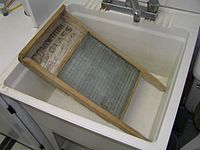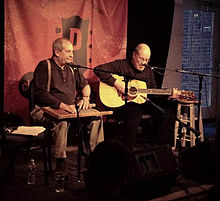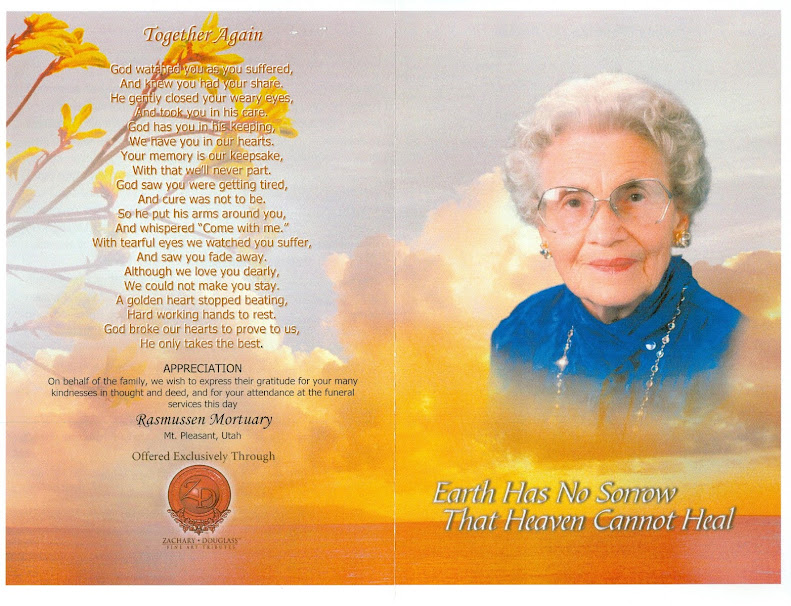▼
Wednesday, July 31, 2024
Tuesday, July 30, 2024
WILLIAM FLETCHER REYNOLDS' WIVES (from our archives)
In August of 2009 we shared with you the history of William Fletcher Reynolds written by his daughter Ellis Reynolds Shipp. http://www.blogger.com/blogger.g?blogID=823365018368490611#editor/target=post;postID=1116391075980015813

Joann Truscott Peterson has now furnished the following histories of two of his wives.
Anna Hawley Reynolds was his first wife and was also the mother of Ellis Reynolds Shipp.
Monday, July 29, 2024
Sunday, July 28, 2024
Saturday, July 27, 2024
Friday, July 26, 2024
Thursday, July 25, 2024
Wednesday, July 24, 2024
July 24th Celebrated by Mt. Pleasant Residents in 1885
 Bowery as Used by the Primary in 1885
Bowery as Used by the Primary in 1885Although the pioneers had plenty of hard work, problems and trials, they also made their joys and amusements.
A few days prior to the 24th of July which marked the 12th anniversary of the arrival of the first group of pioneers into Salt Lake Valley, the people of Mount Pleasant assembled and arranged for a grand celebration. Much time and pains were taken in arranging the program and the dinner. A bowery 40 by 60 feet, built of cedar posts, placed upright holding as a shed, and covered with fresh green willows and limbs, was erected in the southwest corner of the fort. Pitch pine wood, to furnish light for the dance and the amusement in the evening, was brought from the mountains by John Waldermar and Christian Widergren Anderson.
On the morning of July 24th, salutes were fired at daybreak and drums were beat. At 9 a. m., the people gathered at the bowery. The program began with singing by the choir. (James Hansen was choir leader at that time.) The invocation was offered by Bishop William S. Seeley; there followed spirited speeches, music, vocal and instrumental, recitations, etc., until one o'clock, when an abundant meal was served. At 3 p.m., everything was cleared away for the amusements and dancing, which continued until 2 o'clock in the morning of the 25th, and with the rhythm of the music, and on the bare ground they really did dance. This celebration was characterized all the way through by the harmony and good feeling that prevailed among the people. (History of Mt. Pleasant by Hilda Madsen Longsdorf pp: 55-54)
Dancing was enjoyed to the utmost, and during the early days of the settlement, dances were also often held in the homes, among them being the John Fredrick Fechser home, which was on the east side in the fort; it was there that Fred Nielson taught the waltz step. James Hansen also taught dancing at his home.
It is said that Hans Y. Simpson had the first board floor in the fort, and that almost before it was finished, the colonists gathered there for a dance.
Fortunate were the pioneers in having among them so many fine musicians, who willingly contributed their talents toward the amusement of the colony. John Waldermar played the violin, flute, and cornet. James Hansen, who prior to his coming to Mount Pleasant, had belonged to the Brass Band in Salt Lake City, also played the violin, flute and cornet. Lars Nielsen, known as Lars Fiddler, played by ear, became very popular and had many invitations from other settlements to locate there. He, with John Waldermar and James Hansen, played for all the important gatherings held in Mount Pleasant during the first sixteen years.
Among other prominent pioneer musicians, who also contributed necessary pioneer music were Levi B. Reynolds, violinist; George Nielsen, tambourine; Orin Clark, the Jaw Bones of an Ox on a stick; Alma Staker, Bone Clapper; Rudolph Bennett, Triangle; Bent Hansen, Bass Fiddle; Soren Hansen, Clarinet; Andrew Bramsted, Violin; and August Mynear, Violin. Later August Mynear
and his son were musicians in the Salt Lake Theatre for many years. (p. 64 HML)
and his son were musicians in the Salt Lake Theatre for many years. (p. 64 HML)
Tuesday, July 23, 2024
HISTORY OF THE WASHBOARD
Washboard
Washboard may refer to:
-
Washboard (laundry)
This article is about the tool used to hand wash laundry. For the musical percussion instrument, see Washboard (musical instrument). For other uses, see Washboard (disambiguation).
a glass washboard
A washboard is a tool designed for hand washing clothing. With mechanized cleaning of clothing becoming more common by the end of the 20th century, the washboard has become better known for its secondary use as a musical instrument.The traditional washboard is usually constructed with a rectangular wooden frame in which are mounted a series of ridges or corrugations for the clothing to be rubbed upon. For 19th-century washboards, the ridges were often of wood; by the 20th century, ridges of metal were more common. A "fluted" metal washboard was patented in the United States by Stephen Rust in 1833.[1] Zinc washboards were manufactured in the United States from the middle of the 19th century. In the late 20th century and early 21st century, ridges of galvanized steel are most common, but some modern boards are made of glass. Washboards with brass ridges are still made.Many parts of the world still use washboards for washing clothes.[2] Clothes are soaked in hot soapy water in a washtub or sink, then squeezed and rubbed against the ridged surface of the washboard to force the cleansing fluid through the cloth to carry away dirt. Washboards may also be used for washing in a river, with or without soap. Then the clothes are rinsed. The rubbing has a similar effect to beating the clothes and household linen on rocks, an ancient method, but is less abrasive. Military personnel often use washboards to do their laundry when no local laundry facilities exist.[3]Some experts emphasize that using a washboard is superior to using modern laundry machines because it saves water and electricity and is not so hard on the clothing 
Woman on an Israeli Kibbutz using a washboard to do laundry 
Glass Washboard - Music
- Washboard Rhythm Kings, a loose aggregation of jazz performers from the 1930s
- Washboard Jungle, a four-man American musical group formed in 1989
- Washboard Sam (1910-1966), U.S. blues musician
- Washboard Willie (1909-1991), U.S. blues musician
- Washboard Blues, a popular song written by Hoagy Carmichael
- Geography
- Washboard Falls, a waterfall in Ontario Canada
- Washboard Junction, Utah, a highway junction in the U.S. state of Utah
- Other
- washboard abs, referring to rippled appearance of the rectus abdominis muscle
- washboard stomach, same as washboard abs
- Washboarding, transverse ripples in the surface of gravel and dirt roads
- Washboard moraine, a landform caused by glaciers
Washboard (musical instrument)
This article is about the musical percussion instrument. For the tool used to wash clothing, see Washboard (laundry). For other uses, see Washboard (disambiguation).

Washboard player accompanying piano
The washboard and frottoir (from Cajun French "frotter", to rub) are used as apercussion instrument, employing the ribbed metal surface of the cleaning device as a rhythm instrument. As traditionally used in jazz, zydeco, skiffle, jug band, andold-time music, the washboard remained in its wooden frame and is played primarily by tapping, but also scraping the washboard with thimbles. Often the washboard has additional traps, such as a wood block, a cowbell, and even smallcymbals. Conversely, the frottoir (zydeco rubboard) dispenses with the frame and consists simply of the metal ribbing hung around the neck. It is played primarily with spoon handles or bottle openers in a combination of strumming, scratching, tapping and rolling. The frottoir or vest frottoir is played as a stroked percussion instrument, often in a band with a drummer, while the washboard generally is a replacement for drums. In Zydeco bands, the frottoir is usually played with bottle openers, to make a louder sound. It tends to play counter-rhythms to the drummer. In a jug band, the washboard can also be stroked with a single whisk broom and functions as the drums for the band, playing only on the back-beat for most songs, a substitute for a snare drum. In a four-beat measure, the washboard will stroke on the 2-beat and the 4-beat. Its best sound is achieved using a single steel-wire snare-brush or whisk broom. However, in a jazz setting, the washboard can also be played with thimbles on all fingers, tapping out much more complex rhythms, as in The Washboard Rhythm Kings, a full-sized band, and Newman Taylor Baker.

Busking on a washboard.
There are three general ways of deploying the washboard for use as an instrument. The first, mainly used by American players like Washboard Chaz of the Washboard Chaz Blues Trio and Ralf Reynolds of the Reynolds Brothers Rhythm Rascals, is to drape it vertically down the chest. The second, used by European players like David Langlois of the Blue Vipers of Brooklyn and Stephane Seva of Paris Washboard, is to hold it horizontally across the lap, or, for more complex setups, to mount it horizontally on a purpose-built stand. The third (and least common) method, used byWashboard Sam and Deryck Guyler, is to hold it in a perpendicular orientation between the legs while seated, so that both sides of the board might be played at the same time.
There is a Polish traditional jazz festival and music award named "Złota Tarka" (Golden Washboard). Washboards, called "zatulas", are also occasionally used in Ukrainian folk music.
Contents
History
Well known washboard musicians
References
Further reading
External links
History
The washboard as a percussion instrument ultimately derives from the practice of hamboning as practiced in West Africa and brought to the new world by African slaves. This led to the development ofJug bands which used jugs, spoons, and washboards to provide the rhythm.[1] Jug bands became popular in the 1920

Steve Katz
Monday, July 22, 2024
Sunday, July 21, 2024
Saturday, July 20, 2024
Friday, July 19, 2024
BEGINNING OF THE TURKEY INDUSTRY IN SANPETE COUNTY (part 3) ~~~Additional photos from last two posts.
In 2013 Moroni Processing celebrated its 75th Anniversary and published a memory book with stories and pictures. Nancy Garlick did much of the research and had it copyrighted. We asked her for permission
to include some of the highlights of this book on our blog. She said Yes! Over the next few days, we will post many photos and stories to give our readers fond remembrance and further knowledge of this Sanpete History.
 |
Thursday, July 18, 2024
BEGINNING OF THE TURKEY INDUSTRY IN SANPETE COUNTY (Part 2)
In 2013 Moroni Processing celebrated its 75th Anniversary and published a memory book with storie
s and pictures. Nancy Garlick did much of the research and had it copyrighted. We asked her for permission
to include some of the highlights of this book on our blog. She said Yes !!! Over the next few days we will post many of the photos and stories that will give our readers fond remembrance and also further knowledge of this Sanpete History.
to include some of the highlights of this book on our blog. She said Yes !!! Over the next few days we will post many of the photos and stories that will give our readers fond remembrance and also further knowledge of this Sanpete History.
Wednesday, July 17, 2024
BEGINNING OF THE TURKEY INDUSTRY IN SANPETE COUNTY
In 2013 Moroni Processing celebrated its 75th Anniversary and published a memory book with storie
s and pictures. Nancy Garlick did much of the research and had it copyrighted. We asked her for permission
to include some of the highlights of this book on our blog. She said Yes !!! Over the next few days we will post many of the photos and stories that will give our readers fond remembrance and also further knowledge of this Sanpete History.
to include some of the highlights of this book on our blog. She said Yes !!! Over the next few days we will post many of the photos and stories that will give our readers fond remembrance and also further knowledge of this Sanpete History.














































